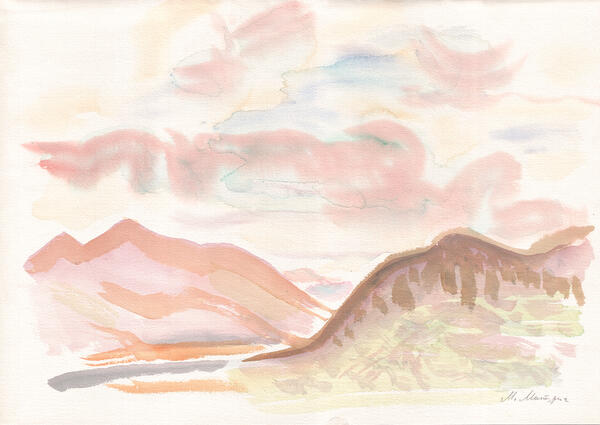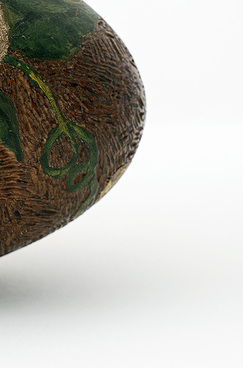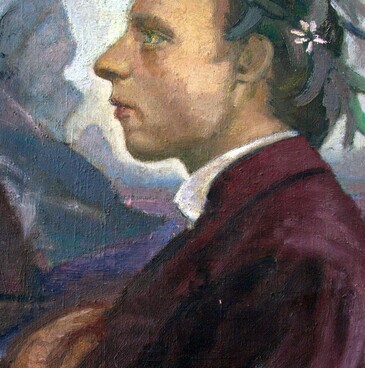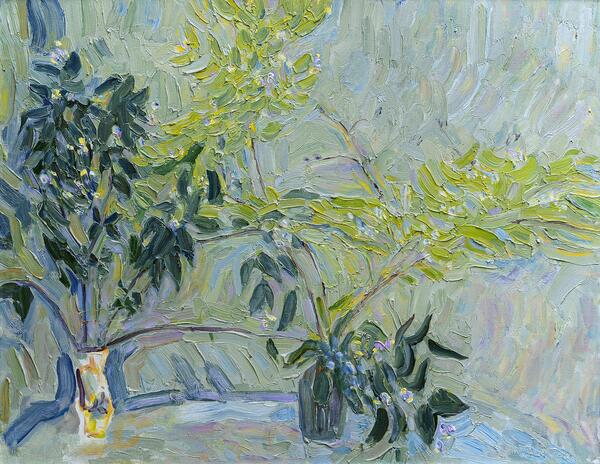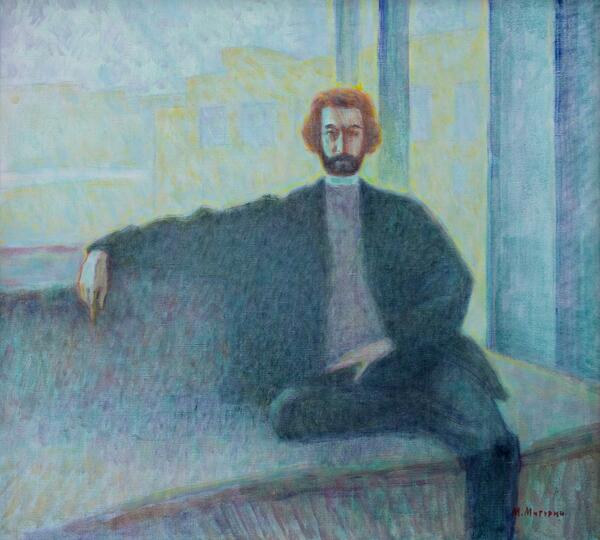May Petrovich Miturich-Khlebnikov jokingly called his famous illustrations of children’s books “mischievous drawing”. Another angle of his work, a philosophical one, manifested itself primarily in landscapes made during his trips to Altai, Tuva, Pamir, Japan, and India.
India was a cherished country for May’s uncle, Velimir Khlebnikov, and was part of his mandatory life plan, outlined in 1913 in a letter to Aleksei Kruchenykh. Khlebnikov’s third step was “to go on a trip in India, where people and deities are together.” While still living in Paris, Vera Khlebnikova wrote enthusiastically about an invitation she received “to come to India for the winter.”
May Miturich-Khlebnikov came to the country in 1996 at the invitation of the foundation “Nicholas Roerich Heritage” in the company of seven other artists and the art historian Tatiana Vasilyevna Blavatskaya. The participants of the creative work trip arrived in Delhi and crossed the whole of India by bus, visiting the village of Naggar Kullu in the Himalayas. They often had to drive along the edge of a cliff. They stayed near the estate of Nicholas Roerich “in an exotic former palace of the maharajah”, erected more than 500 years ago and turned into a hotel.
Miturich-Khlebnikov devoted an entire month to creating watercolors, sometimes painting two canvases a day, taking advantage of the always changing light and shadow in those mountainous areas. As a result, he created 53 works, “some of which, ” according to the artist’s self-critical assessment, “seem to be successful.”
His colleagues and fellow travelers regularly went somewhere to paint en plein air. Miturich-Khlebnikov also managed to find a nice secluded place to work, where no one could distract him. As the artist himself described, from the vantage point he chose, the landscape opened “a bit in one direction, a bit in the other.” But this seemingly monotonous landscape became an inexhaustible source of inspiration for him.
Miturich-Khlebnikov’s mountains are distinguished by subtle tones, as if dissolving in the sunny air. In addition to mountain landscapes, the artist also painted local villages, which resembled archaeological excavations, ancient houses and khuruls.
On his 80th birthday,
Miturich-Khlebnikov was awarded the gold medal of the Russian Academy of Arts.
His Himalayan watercolors played a significant role in his gaining recognition
as a landscapist.

